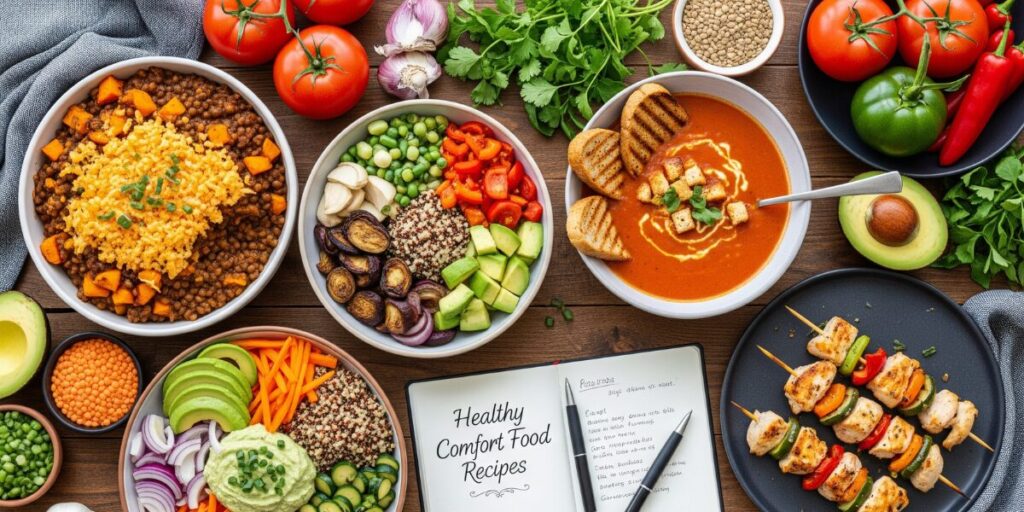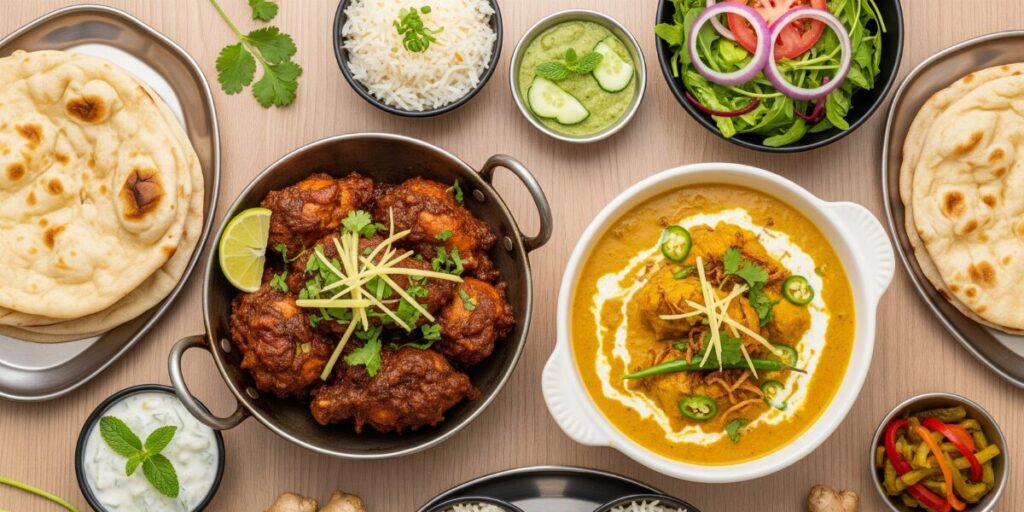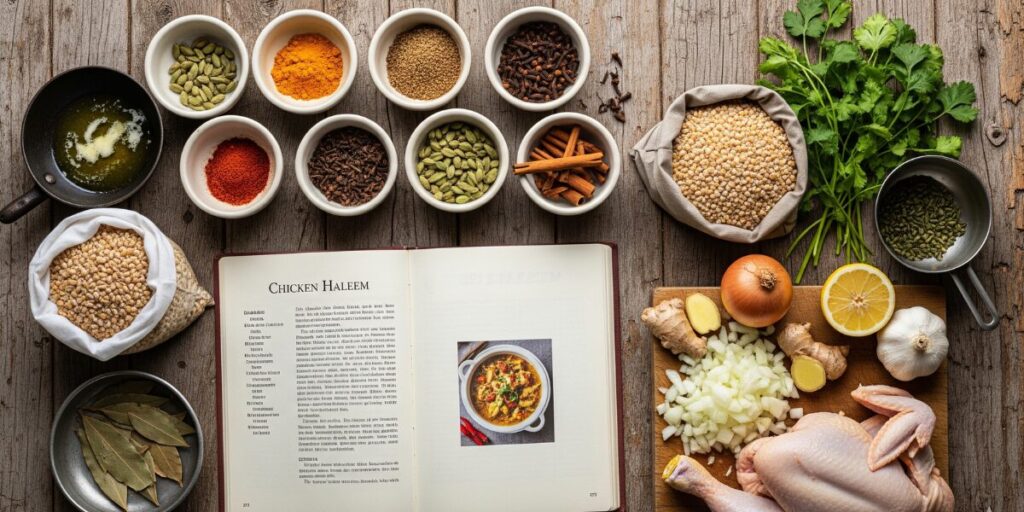
The Chicken Haleem Recipe is among the most famous foods in South Asian cuisine. The food is rich, hearty, and has great flavor. It is a favorite for Pakistani, Indian, and Middle Eastern people. The combination of chicken, lentils, wheat, and spices produces a thick porridge-like food that is filling and tasty.
Chicken haleem is slow cooking and patience, but the outcome is worth it all. It’s made by many for family dinners, weddings, and Ramadan. Everything you need to know about this recipe is found in this article. From ingredients and preparation to cooking procedure, tips, and variations, we have it all covered. Here we go into this rich cultural dish that is full of flavor.
What is Chicken Haleem
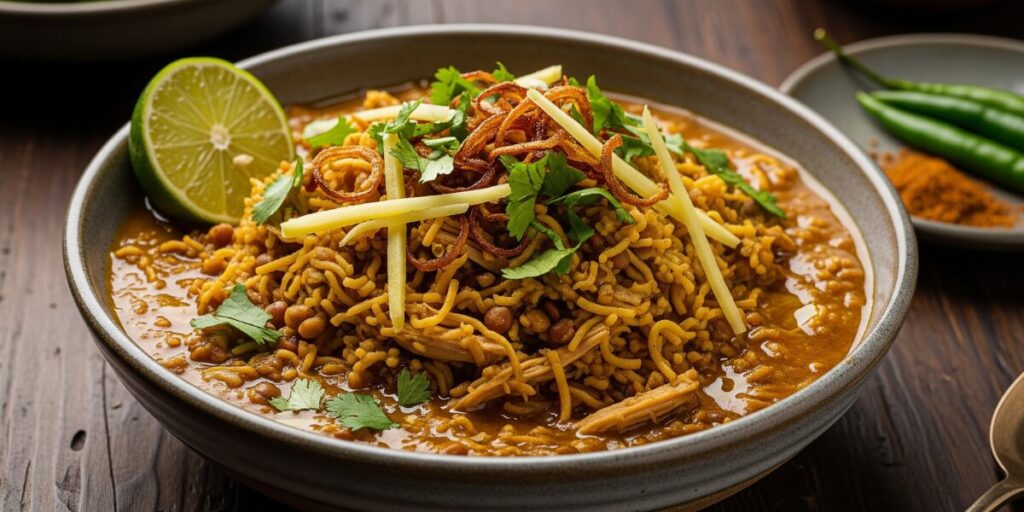
Chicken Haleem is a slow-cooked dish made with chicken, lentils, wheat, and spices. It is often compared to a thick soup or porridge but is much richer in flavor. The texture is smooth and creamy, and every bite is packed with taste.
Historically, haleem has roots in the Middle East, where it was introduced to the Indian subcontinent centuries ago. Over time, it became a staple dish in Pakistan and India. Today, it is especially famous in cities like Karachi, Hyderabad, and Lahore.
Ingredients Overview
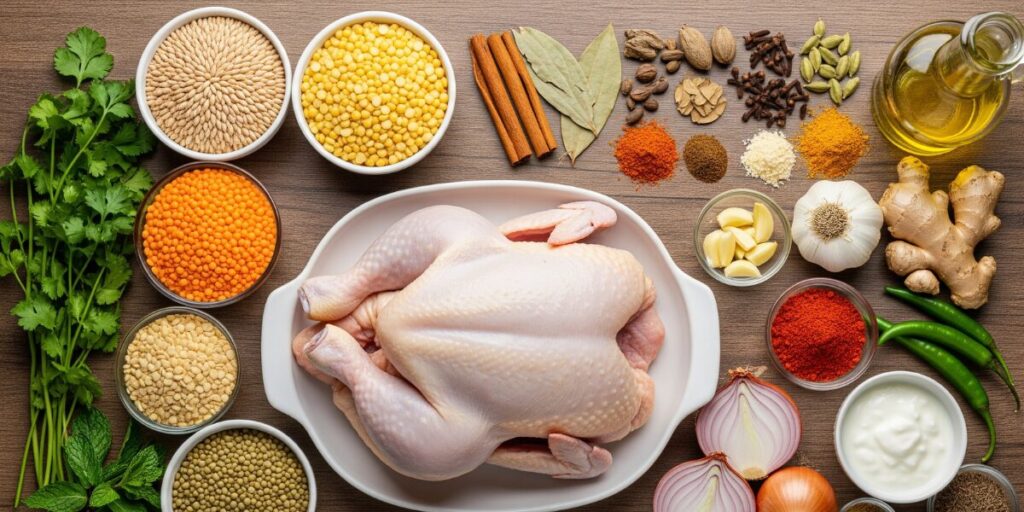
To prepare chicken haleem you need a variety of ingredients. Each one plays an important role in flavor and texture. The following table gives a simple breakdown of the core ingredients.
The Chicken Haleem recipe combines wheat, barley, and a mix of lentils cooked slowly with tender chicken and aromatic spices. Ghee or oil gives it richness, while fried onions, ginger, lemon, and fresh herbs add freshness and depth to this hearty and flavorful dish.
Ingredient Purpose Notes
Chicken Main protein Usually boneless, boiled, and shredded
Wheat & Barley Base thickness Provides creamy and smooth body
Lentils Adds flavor and nutrition Moong dal, masoor dal, chana dal commonly used
Spices Taste and aroma Includes garam masala, turmeric, coriander, cumin
Onions & Garlic Depth of flavor Often fried for garnish
Ghee or Oil Richness Gives authentic taste and smoothness
Prepping the Ingredients
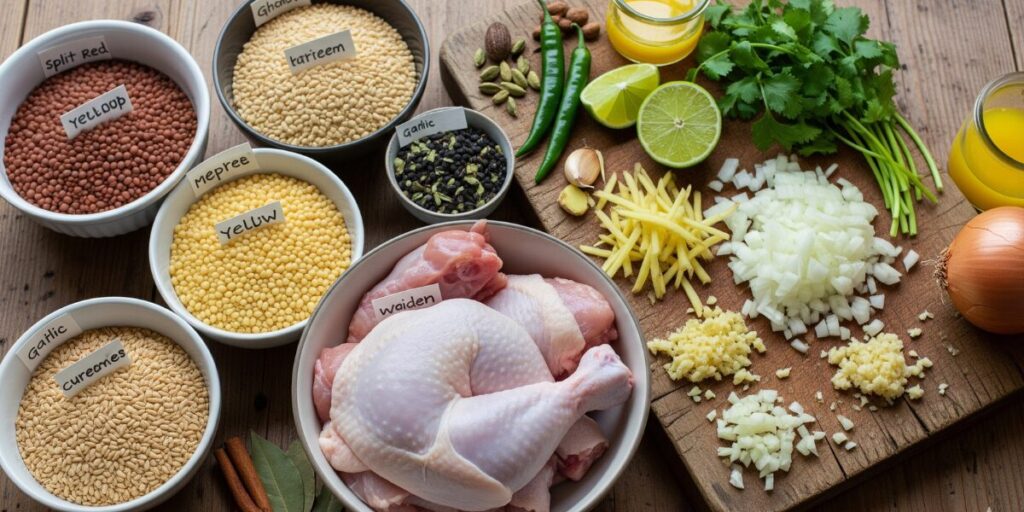
Preparation is the key to making perfect chicken haleem. First, the lentils and wheat grains must be soaked overnight. This helps them cook faster and blend into a smooth mixture later.
Next, the chicken should be boiled with basic spices like salt, ginger, garlic, and turmeric. Once cooked, it is shredded into thin pieces. The stock from boiling the chicken is also kept aside because it adds extra flavor to the haleem base.
The spices are roasted lightly before use. This step is important because it releases their natural oils and enhances aroma. Onions are fried to golden brown and kept aside for garnishing. Once all these steps are done, the cooking becomes easier and more organized.
Cooking Method (Step-by-Step)
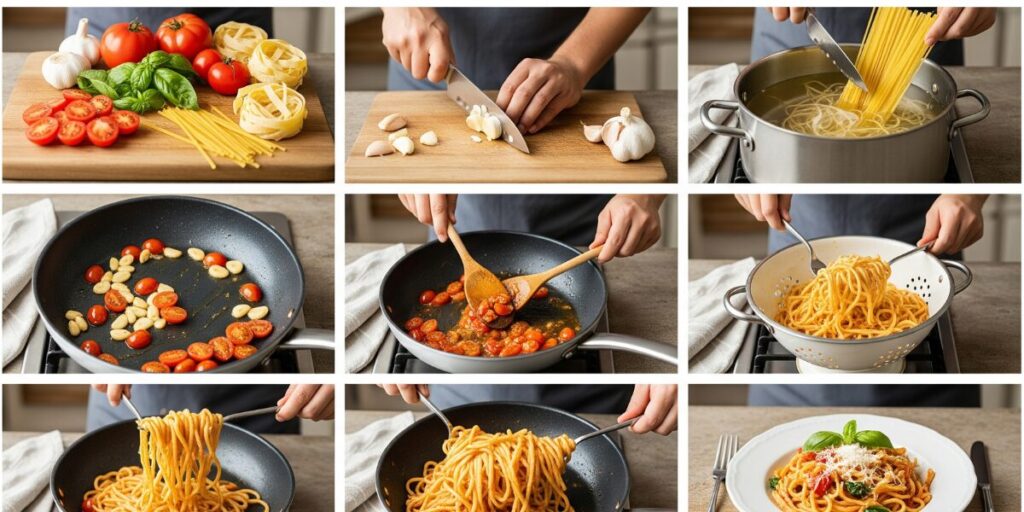
The cooking method of the chicken haleem recipe may seem long, but it is simple if followed step by step.
First, cook the soaked wheat and lentils until they become very soft. These are then blended or mashed into a smooth paste. In another pot, heat oil or ghee and fry onions until golden. Add ginger-garlic paste and cook with spices like coriander, cumin, chili powder, and garam masala.
After that, add the shredded chicken and mix well. Slowly pour in the lentil and wheat mixture along with chicken stock. Keep stirring continuously to avoid lumps. The dish is then cooked on low flame for hours until it reaches a creamy texture.
At the end, garnish with fried onions, green chilies, coriander leaves, ginger slices, and a drizzle of lemon juice. Some people also add a spoon of ghee on top for extra richness.
Tips for Perfect Chicken Haleem
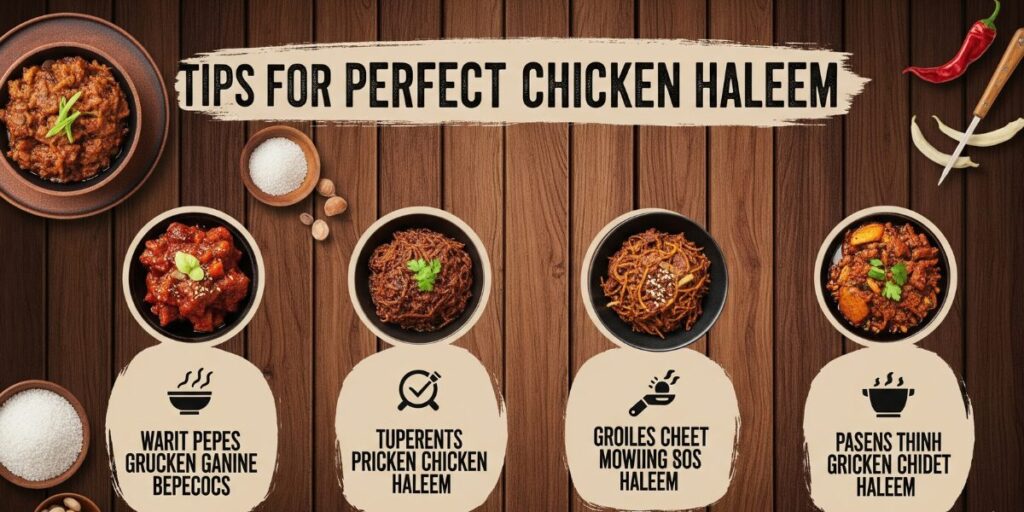
Always soak the grains and lentils overnight. This ensures they cook faster and blend better. Stirring is very important because haleem can easily stick to the bottom of the pot. Cook on low flame and allow time for flavors to blend slowly.
For a richer taste, use ghee instead of regular cooking oil. If you want a smoother consistency, use a hand blender to mash the mixture. Also, always use fresh spices, as old spices lose their flavor and aroma quickly.
Variations of Chicken Haleem
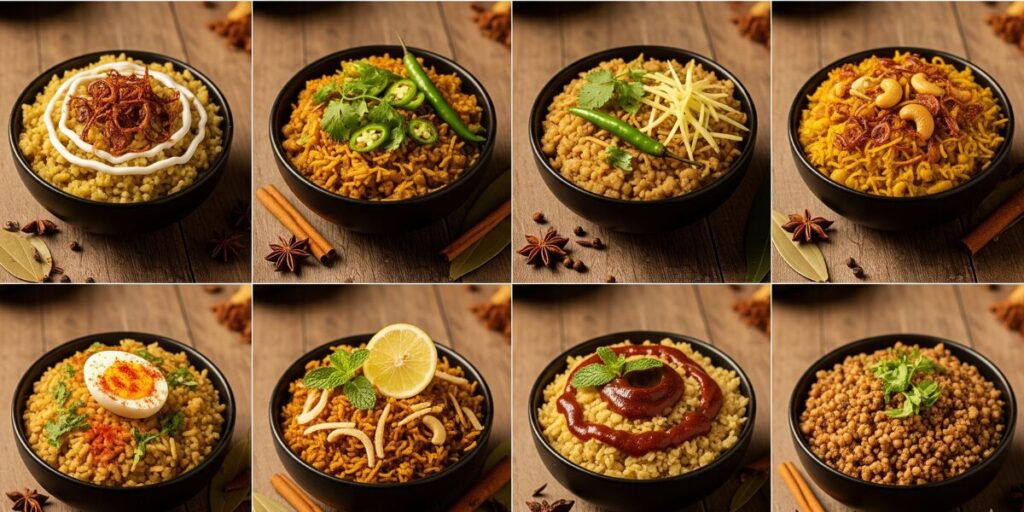
Although the chicken haleem recipe is the most popular, there are many variations of haleem across regions. In Hyderabad, mutton haleem is considered more traditional and is prepared during Ramadan. In some parts of Pakistan, beef haleem is also widely enjoyed.
Vegetarians often make a lentil-only version without meat. Some cooks also add oats or rice instead of wheat for a different texture. The flavor can be adjusted based on personal preference, but the heart of the dish remains the same: slow-cooked richness.
Serving Suggestions
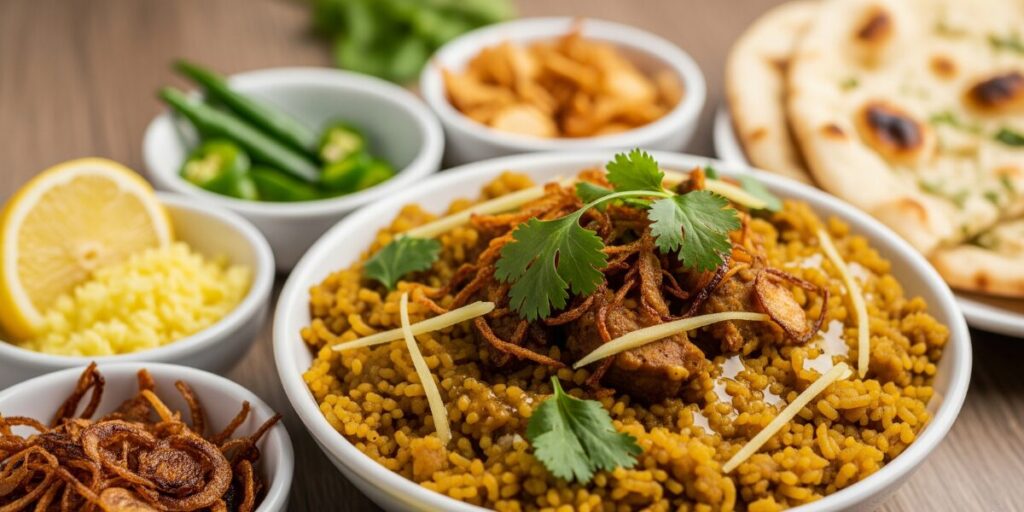
Chicken Haleem is best enjoyed hot, with garnishes that add freshness and spice. It is traditionally served with fried onions, lemon wedges, green chilies, and fresh coriander. Ginger slices give a sharp kick that balances the richness of the dish.
It is often eaten with naan, roti, or paratha. Some people even enjoy it with plain rice. A refreshing drink like lassi or a glass of cold water completes the meal. In family gatherings, haleem is usually served in large bowls so everyone can share.
Nutrition & Benefits
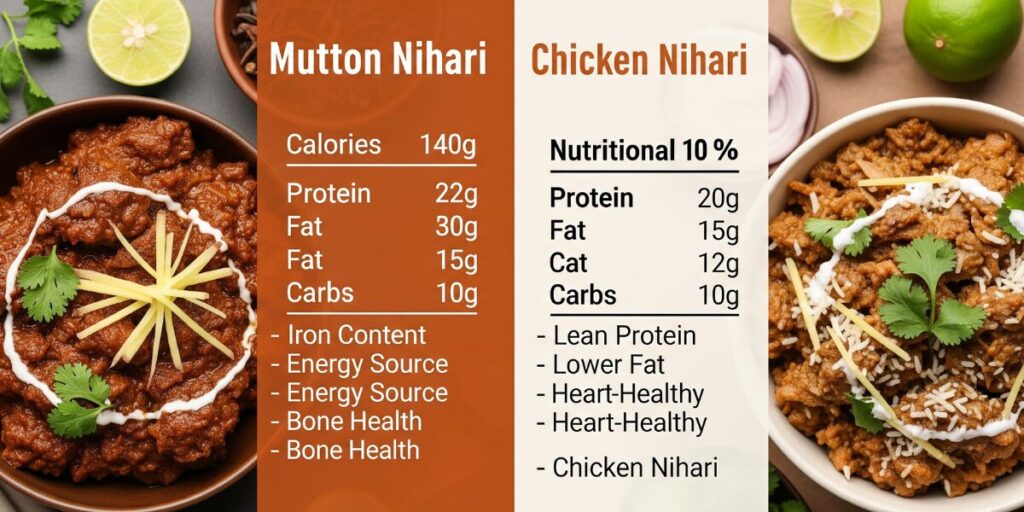
Chicken haleem is not only delicious but also highly nutritious. It is rich in proteins from chicken and lentils, and it provides complex carbohydrates from wheat and barley.
The dish is also packed with vitamins and minerals, especially iron and magnesium. Since it is slow-cooked, the nutrients remain intact. It gives energy and keeps you full for a long time. That’s why many people eat haleem during fasting, as it keeps them satisfied for hours.
Nutrition (per serving)| Amount
Calories 350–400 kcal
Protein 25 – 30 g
Carbohydrates
Fats 12 g
Fiber 7 g
History of Chicken Haleem
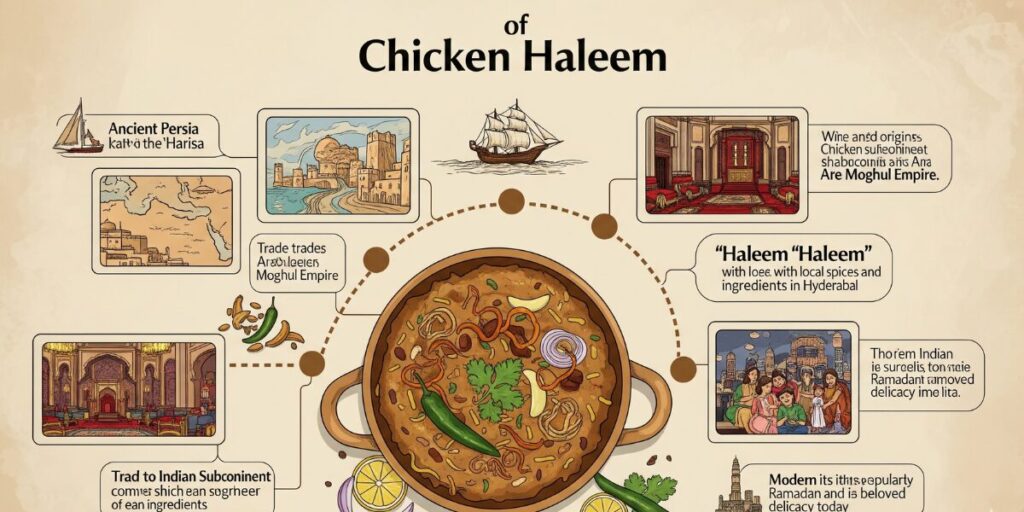
The story of The chicken haleem recipe goes back more than a thousand years. The original version of haleem, known as Harees, was first cooked in the Arab world. When traders and travelers brought it to South Asia, local spices and grains were added. This created the dish we enjoy today.
In Hyderabad and Karachi, haleem became famous during Mughal times. It was prepared during Ramadan to give people energy for fasting. Over centuries, it turned into a festive dish eaten not only in homes but also sold in markets and food stalls.
Common Mistakes to Avoid
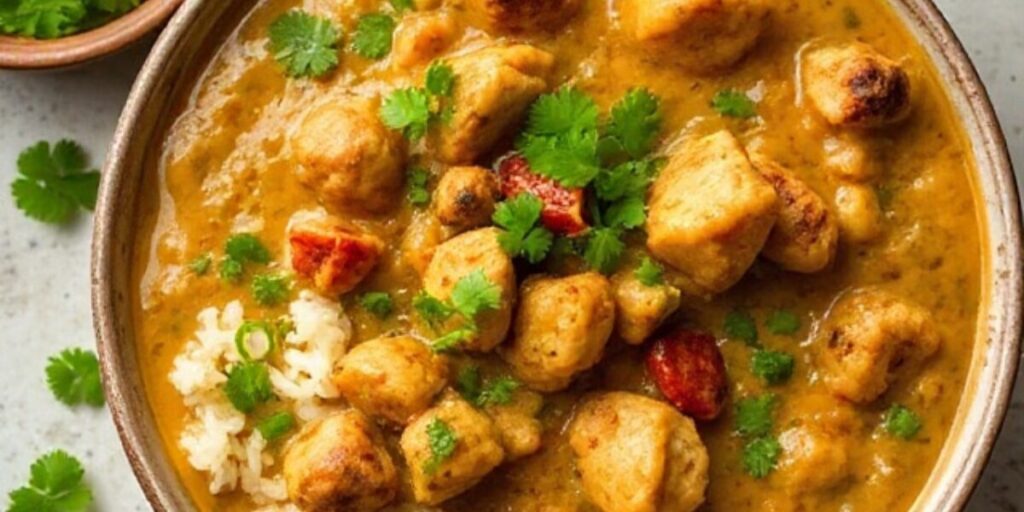
Many beginners struggle while cooking chicken haleem, because it requires care. One mistake is adding too much water, which makes it runny instead of thick. Another mistake is not soaking grains overnight, which leads to a hard and uneven texture.
Using less spice can make it taste bland, while using too much spice can overpower the natural flavor. Also, some people do not stir continuously, which causes haleem to burn at the bottom. Avoiding these mistakes ensures a smooth and tasty dish.
Chicken Haleem vs. Other Dishes
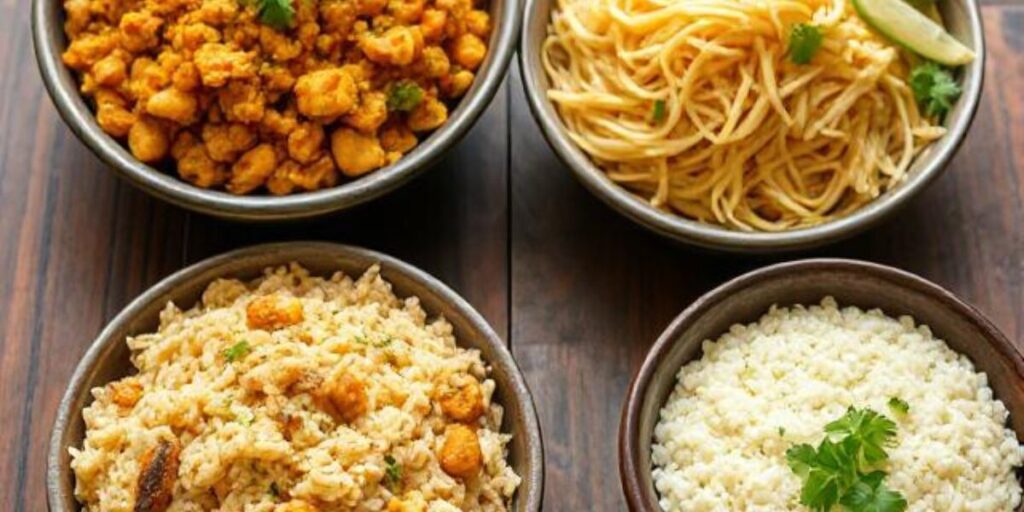
It’s interesting to compare chicken haleem recipe with other popular South Asian dishes. Unlike biryani, which is rice-based, haleem is wheat and lentil-based. Unlike nihari, which is a meat stew, haleem has a porridge-like texture.
Haleem is also different from dal curry, even though it contains lentils. This is because haleem is cooked for a much longer time, and the meat is blended into the grains. The result is thicker, richer, and more filling than regular curries.
Dish Main Base Cooking Time Texture
Chicken Haleem Wheat + lentils + chicken Long, slow Thick, creamy
Biryani Rice + meat Medium Grainy, layered
Nihari Meat + gravy Long, slow Soupy, spicy
Dal Curry Lentils Short Light, thin
Cultural Importance of Chicken Haleem
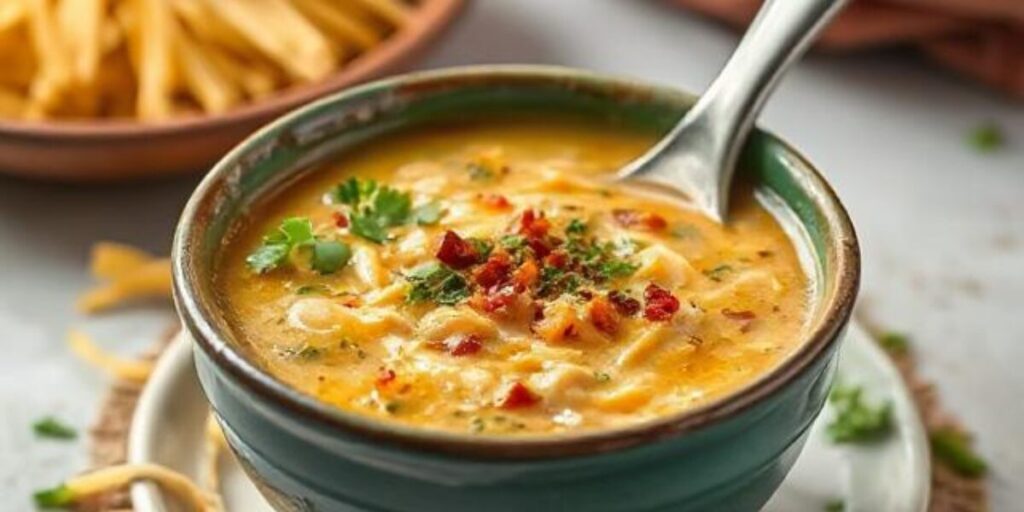
The chicken haleem recipe is not just food, it is culture. Families cook haleem during religious months like Ramadan, Muharram, and Eid. It is often shared with neighbors and guests as a sign of love and generosity.
In cities like Karachi and Hyderabad, people line up at famous haleem shops during festivals. The dish is also served at weddings and family events. Its slow cooking process reflects patience, tradition, and care, making it more than just a meal.
Storage and Reheating

Storing chicken haleem properly helps keep its flavor fresh. It should always be kept in airtight containers in the fridge. Normally, it lasts 3 to 4 days when refrigerated. If you want to store it longer, freezing is the best option.
When reheating, always add a little water or chicken stock, as haleem becomes thicker when cold. Heat it on a low flame while stirring to bring back the smooth texture. Avoid reheating in the microwave only, as it may dry out parts of the dish.
FAQ”s
Can I make chicken haleem in a pressure cooker?
Yes, you can. It saves time and gives the same creamy texture. Just make sure to stir well.
Can I use boneless chicken for haleem?
Yes. Boneless chicken is easier to shred and works best for haleem.
How long does it take to cook haleem?
Traditional haleem takes 4–6 hours. But with a pressure cooker or ready mixes, it can be done in 1–2 hours.
Can I freeze chicken haleem?
Yes. Store in airtight containers for up to two weeks. Reheat slowly before serving.
Why is my haleem too watery?
It means extra water was added. Cook it on low flame until it thickens.
Conclusion
The Chicken Haleem Recipe is a beautiful mix of flavors, culture, and nutrition. Though it requires time and patience, the result is worth every minute. From family dinners to festive gatherings, haleem is always a star dish. Preparing it at home lets you enjoy the authentic taste, while also adjusting it to your own style. Try this recipe once, and it will surely become a favorite in your kitchen.
Meta Description
Learn how to make authentic chicken haleem recipes with step-by-step guide, tips, nutrition, and serving suggestions.

